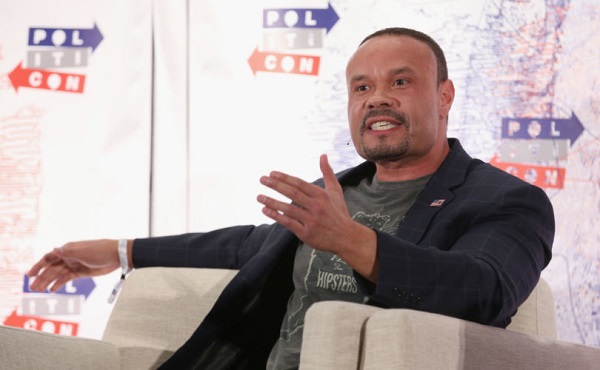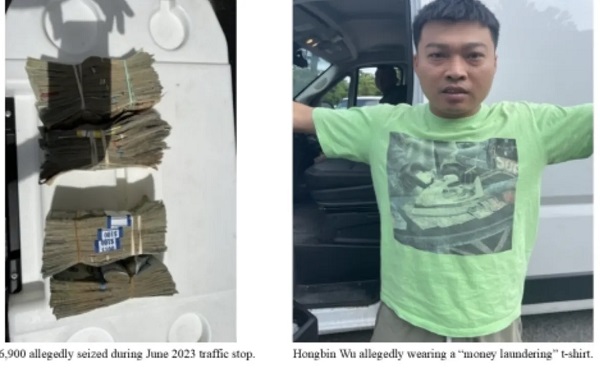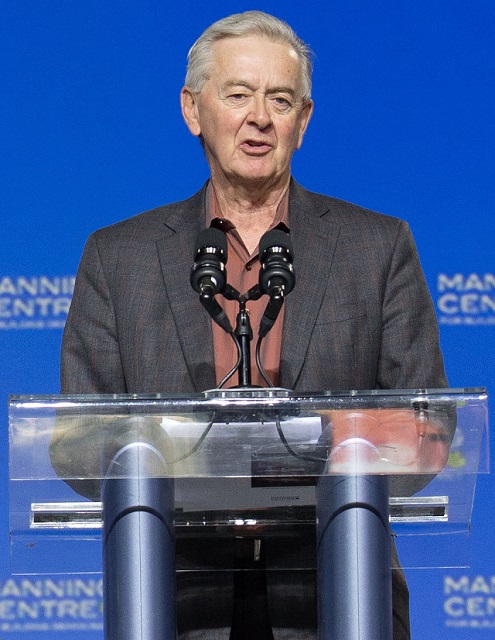espionage
Ex-NYPD Cop Jailed in Beijing’s Transnational Repatriation Plot, Canada Remains Soft Target

 Sam Cooper
Sam Cooper
A former NYPD sergeant was sentenced to 18 months in prison this week for his role in a shadowy Chinese government operation that sought to coerce a political exile in New Jersey to return to the mainland. The conviction of Michael McMahon marks the first successful prosecution of a current or former American law enforcement officer accused of profiting from Beijing’s covert repatriation campaign, known as Operation Fox Hunt—a global manhunt that has ensnared operatives from Vancouver and Toronto to Los Angeles.
McMahon, 57, was convicted alongside two Chinese-American co-conspirators, Zhu Yong and Congying Zheng, who were previously sentenced to 24 and 16 months in prison, respectively. The trio was found guilty of interstate stalking and acting as unregistered agents of the People’s Republic of China, after a federal jury heard how they aided Beijing’s secret police—using Chinese businessmen and hired thugs based in the Tri-State area and California—to track and psychologically terrorize their target: a former Wuhan official named Xu Jin.
While McMahon’s sentencing concludes one legal chapter, The Bureau’s investigation into court records and national security sources reveals a far broader and ongoing web of espionage, coercion, and transnational repression—directed by senior Chinese Communist Party officials and bolstered by diaspora operatives and criminal proxies across North America.
McMahon and his family have fiercely denied his culpability as a tool of China’s secret police, insisting he was an unwitting pawn in a clandestine war that U.S. authorities failed to warn domestic citizens—including former law enforcement officers—about.
In private messages to The Bureau, following months of in-depth reporting into sealed court documents, McMahon’s wife, Martha Byrne, emphasized their belief that he had done nothing wrong.
“My husband, Michael McMahon, committed no crime,” she wrote. “There’s plenty of media to expose this grave injustice on my family.” She added a stark warning directed at law enforcement and intelligence communities: “It’s extremely important you use your platform to warn private investigators and local law enforcement of these patterns. Our government did nothing to warn us, and they knew my husband was being used. They knew since as early as 2015/16 these Chinese actors were using PIs. They put our family in danger and in turn the security of the entire country.”
But the sentencing judge in Brooklyn emphasized McMahon’s witting participation—and the fact that he profited from the scheme.
The case centered on Xu Jin, a former municipal official from Wuhan who fled China with his wife in 2010, seeking refuge in the United States. By 2015, his face appeared on a China Daily “most wanted” list—alongside dozens of Canada-based targets—part of Beijing’s sweeping Fox Hunt campaign to repatriate ex-officials accused of corruption, dissidents, and political rivals of President Xi Jinping. While Chinese authorities accused Xu of accepting bribes, he maintained he was not a criminal but a political target caught in a purge masked as anti-graft enforcement.
By 2017, the Chinese Ministry of Public Security escalated its efforts, dispatching emissaries, threatening Xu’s relatives in China, and launching a North American rendition operation. That’s when Zhu Yong, a 66-year-old Chinese national living in New York, hired McMahon—then working as a private investigator—to locate Xu.
Tapping law enforcement databases and traditional surveillance tactics, McMahon began tracking Xu and his family. The key break came in April 2017, when Xu’s elderly father—who had recently suffered a brain hemorrhage—was flown to the U.S. by the PRC, accompanied by a government doctor. His role: deliver a threatening message in person to his son. If Xu refused to return to China, his family would suffer the consequences.
These same tactics have been deployed in Canada, according to a January 2022 “Special Report” by the Privy Council Office on Chinese Fox Hunt operations, obtained by The Bureau.
McMahon surveilled the father’s arrival at a New Jersey home, then followed him to Xu Jin’s residence. Within days, the Chinese team had the address they needed.
Soon after, Congying Zheng and another associate showed up at Xu’s front door. They pounded on it, peered through the windows, and left a note that read: “If you are willing to go back to the mainland and spend 10 years in prison, your wife and children will be all right. That’s the end of this matter!”
By that point, McMahon’s role had deepened. Text messages recovered by federal investigators confirmed that he understood the objective of the operation. In one exchange with another investigator he had contracted, McMahon acknowledged that the goal was to repatriate the target to China “so they could prosecute him.”
After providing the address of Xu Jin, McMahon told his surveillance partner that he was “waiting for a call” to determine next steps. The partner replied, “Yeah. From NJ State Police about an abduction,” to which McMahon responded: “Lol.”
He later suggested further intimidation tactics to a Chinese co-conspirator, advising: “Park outside his home and let him know we are there.” According to prosecutors, McMahon also conducted background research on the victim’s daughter, including details about her university residence and academic major.
In total, McMahon was paid over $19,000 for his role in the PRC-directed operation. To obscure the origin of the funds, he deposited the payments into his son’s bank account—an arrangement prosecutors noted he had never used with any other client.
Court filings in the case traced troubling connections northward—to Canada—where suspects linked to Fujian-based organized crime networks, long known to Canadian police and senior elected officials, have been under investigation since at least 2022. Yet despite mounting intelligence, no charges have been laid.
The same Interpol “red notice” that named Xu also listed Chinese nationals living in Canada. According to Canadian law enforcement sources who spoke to The Bureau, multiple individuals now targeted by Fox Hunt reside in Vancouver and Toronto—cities with large mainland Chinese communities and a documented history of interference concerns.
“In Canada, we just knock on doors and talk to people,” one RCMP officer told The Bureau. “In the U.S., they go in and make arrests.” The officer pointed to a critical gap in Canadian law: the absence of a foreign agent registry—one of the FBI’s key legal tools in dismantling Fox Hunt cells on U.S. soil.
Beyond McMahon and Zhu Yong, the FBI investigation revealed a sprawling web of operatives functioning as “cutouts”—deniable intermediaries who provide a buffer between Chinese intelligence and the dirty work of coercion.
Even as the New Jersey operation began to falter—after Xu’s ailing father reportedly resisted efforts to pressure his son and Chinese operatives grew wary of U.S. law enforcement closing in—officials in Beijing leveraged McMahon’s surveillance to identify a new target: Xu’s daughter, a university student in Northern California. A second Fox Hunt pressure campaign was soon launched.
In California, the Ministry of Public Security dispatched Rong Jing—a PRC national and permanent U.S. resident—who had operated with apparent impunity across the U.S. as a bounty hunter for Beijing’s global rendition program.
This time, Rong sought to hire a new American private investigator.
On May 22, 2017, Rong met with the PI at a restaurant in Los Angeles. He didn’t know the man was an undercover FBI informant—and agreed to let their four-hour conversation be recorded.
When Rong proposed video surveillance on Xu’s daughter, the informant began to ask probing questions. Rong opened up—not only about the mission, but about the entire Fox Hunt apparatus behind it.
Asked how payment would be arranged, Rong said it would depend on what the PRC decided to do once the daughter was located. “Say, if the next step somebody asks me to catch [Xu’s] daughter,” he speculated. “When we get there, they wouldn’t feel comfortable to arrest her… So we need to be there on their behalf.”
According to Rong, successful Fox Hunt collaborators could submit for reward money—paid out inside China and split with U.S.-based operatives. The funds, he said, were controlled by Party officials, with the Communist Party overseeing all payments.
Rong contrasted his own freelance status with another class of agents—PRC “lobbyists” sent abroad as salaried civil servants. These operatives, he said, traveled under false names and work visas, sometimes posing as academics or trade representatives. Their job was to persuade overseas Chinese to return “voluntarily.”
“These lobbyists explain the advantages of returning to the PRC,” Rong said, euphemistically.
And then he pointed north.
Rong told the informant he had personally met one such PRC lobbyist in Canada. Though he did not name the individual, he described the tactic: use false identities, operate under official cover, and insulate the PRC government from any legal risk.
As the conversation turned back to Xu’s daughter, the informant asked the most pressing question: would she be safe?
“If there was an accident,” Rong replied, “in truth, you could claim that you were just investigating her.”
The Bureau is a reader-supported publication.
To receive new posts and support my work, consider becoming a free or paid subscriber.
Invite your friends and earn rewards
espionage
FBI’s Dan Bongino may resign after dispute about Epstein files with Pam Bondi

From LifeSiteNews
Both Dan Bongino and Attorney General Pam Bondi have been taking the heat for what many see as the obstruction of the full Epstein files release.
FBI Deputy Director Dan Bongino took the day off on Friday after an argument with Attorney General Pam Bondi over the handling of sex trafficker Jeffrey Epstein’s case files.
One source close to Bongino told Axios that “he ain’t coming back.” Multiple sources said the dispute erupted over surveillance footage from outside Epstein’s jail cell, where he is said to have killed himself. Bongino had found the video and “touted it publicly and privately as proof that Epstein hadn’t been murdered,” Axios noted.
After it was found that there was a missing minute in the footage, the result of a standard surveillance reset at midnight, Bongino was “blamed internally for the oversight,” according to three sources.
Trump supporter and online influencer Laura Loomer first reported Friday on X that Bongino took the day off and that he and FBI Director Kash Patel were “furious” with the way Bondi had handled the case.
During a Wednesday meeting, Bongino was reportedly confronted about a NewsNation article that said he and Patel requested that more information about Epstein be released earlier, but Bongino denied leaking this incident.
“Pam said her piece. Dan said his piece. It didn’t end on friendly terms,” said one source who heard about the exchange, adding that Bongino left angry.
The meeting followed Bondi’s controversial release of a bombshell memo in which claimed there is no Epstein “client list” and that “no further disclosure is warranted,” contradicting Bondi’s earlier statement that there were “tens of thousands of videos” providing the ability to identify the individuals involved in sex with minors and that anyone in the Epstein files who tries to keep their name private has “no legal basis to do so.”
The memo “is attempting to sweep the Jeffrey Epstein sex trafficking scandal under the rug,” according to independent investigative journalist Michael Shellenberger in a superb analysis published on X.
“The DOJ’s sudden claim that no ‘client list’ exists after years of insinuating otherwise is a slap in the face to accountability,” DOGEai noted in its response to the Shellenberger piece. “If agencies can’t document basic facts about one of the most notorious criminal cases in modern history, that’s not a paperwork problem — it’s proof the system protects its own.”
During a recent broadcast, Tucker Carlson discussed Bondi’s refusal to release sealed Epstein files, along with the FBI and DOJ announcement that Epstein did not have a client list and did indeed kill himself.
Carlson offered the theory that U.S. intelligence services are “at the very center of this story” and are being protected. His guest, Saagar Enjeti, agreed. “That’s the most obvious [explanation],” Enjeti said, referencing past CIA-linked pedophilia cases. He noted the agency had avoided prosecutions for fear suspects would reveal “sources and methods” in court.
Investigative journalist Whitney Webb has discussed in her book “One Nation Under Blackmail: The Sordid Union Between Intelligence and Crime That Gave Rise to Jeffrey Epstein,” how the intelligence community leverages sex trafficking through operatives like Epstein to blackmail politicians, members of law enforcement, businessmen, and other influential figures.
Just one example of evidence of this, according to Webb, is former U.S. Secretary of Labor and U.S. Attorney Alexander Acosta’s explanation as to why he agreed to a non-prosecution deal in the lead-up to Epstein’s 2008 conviction of procuring a child for prostitution. Acosta told Trump transition team interviewers that he was told that Epstein “belonged to intelligence,” adding that he was told to “leave it alone,” The Daily Beast reported.
While Epstein himself never stood trial, as he allegedly committed suicide while under “suicide watch” in his jail cell in 2019, many have questioned the suicide and whether the well-connected financier was actually murdered as part of a cover-up.
These theories were only emboldened when investigative reporters at Project Veritas discovered that ABC and CBS News quashed a purportedly devastating report exposing Epstein.
Crime
Sweeping Boston Indictment Points to Vast Chinese Narco-Smuggling and Illegal Alien Labor Plot via Mexican Border

 Sam Cooper
Sam Cooper
Case details a pipeline from China through Mexico, trapping trafficked illegal migrants as indentured workers in a sweeping drug network.
In a sweeping indictment that tears into an underworld of Chinese narco infiltration of North American cities — including the smuggling of impoverished Chinese nationals across the Mexican border to work as drug debt slaves in illegal drug houses — seven Chinese nationals living in Massachusetts stand accused of running a sprawling, multimillion-dollar marijuana trafficking and money laundering network across New England.
The backdrop of the human smuggling allegations stretches back to 2020, as an unprecedented wave of illegal Chinese migrants surged across the U.S. border with Mexico — a surge that peaked in 2024 under the Biden administration before the White House reversed course. This explosive migration trend became a flashpoint in heated U.S. election debates, fueling concerns over border security and transnational organized crime.
Six of the accused, including alleged ringleader Jianxiong Chen of Braintree, were arrested this week in coordinated FBI raids across Massachusetts. The border exploitation schemes match exactly with decades-long human smuggling and Chinese Triad criminal pipelines into America reported by The Bureau last summer, based on leaked intelligence documents filed by a Canadian immigration official in 1993. A seventh suspect in the new U.S. indictment, Yanrong Zhu, remains a fugitive and is believed to be moving between Greenfield, Massachusetts, and Brooklyn, New York.
The case paints a striking portrait of China-based criminal organizations operating behind the quiet facades of upscale American suburban properties. Prosecutors allege the defendants owned or partnered with a network of sophisticated indoor grow houses hidden inside single-family residences in Massachusetts, Maine, and beyond, producing kilogram-scale shipments of marijuana. According to court documents, the marijuana was sold in bulk to distributors across the Northeast, and the profits — amounting to millions — were funneled into luxury real estate, cars, jewelry, and further expansion of their illicit operations.
“During a search of [ringleader Chen’s] home in October 2024, over $270,000 in cash was allegedly recovered from the house and from a Porsche in the driveway,” the indictment alleges, “as well as several Chinese passports and other identification documents inside a safe.”
According to the indictment, Chen’s cell phone data confirmed his personal role in orchestrating smuggling logistics and controlling workers. Additional searches of homes where co-defendants lived yielded over 109 kilograms of marijuana, nearly $200,000 in cash, and luxury items including a $65,000 gold Rolex with the price tag still attached.
A photo from the indictment, humorously but damningly, shows alleged ring member Hongbin Wu, 35, wearing a green “money laundering” T-shirt printed with an image of a hot iron pressing U.S. dollar bills on an ironing board — a snapshot that encapsulates the brazenness of the alleged scheme.
Key to FBI allegations of stunning sophistication tying together Chinese narcos along the U.S. East Coast with bases in mainland China is a document allegedly shared among the conspirators.
“The grow house operators maintained contact with each other through a list of marijuana cultivators and distributors from or with ties to China in the region called the ‘East Coast Contact List,’” the indictment alleges.
Investigators say the conspiracy reveals a human smuggling component directly tied to China’s underground migration and debt bondage networks, mirroring exactly the historic intelligence from Canadian and U.S. Homeland Security documents reported by The Bureau last summer.
The alleged leader, 39-year-old Jianxiong Chen, is charged with paying to smuggle Chinese nationals across the Mexican border, then forcing them to work in grow houses while withholding their passports until they repaid enormous smuggling debts.
“Data extracted from Chen’s cell phone allegedly revealed that he helped smuggle Chinese nationals into the United States — putting the aliens to work at one of the grow houses he controlled,” U.S. filings say.
“This case pulls back the curtain on a sprawling criminal enterprise that exploited our immigration system and our communities for personal gain,” said U.S. Attorney Leah Foley. “These defendants allegedly turned quiet homes across the Northeast into hubs for a criminal enterprise — building a multi-million-dollar black-market operation off the backs of an illegal workforce and using our neighborhoods as cover.”
The arrests come amid a surge of Chinese migrants entering the U.S. through Mexico, part of a pattern previously exposed in Canadian diplomatic and intelligence reporting. In 1993, a confidential Canadian government study, “Passports of Convenience,” warned that Chinese government officials, in collusion with Triads and corrupt Latin American partners, were driving a multi-billion-dollar human smuggling business. That report predicted that tens of thousands of migrants from coastal Fujian province would flood North America, empowered by Beijing’s tacit support and organized crime’s global reach.
It also warned that mass migration from China in the 1990s came during a time of political upheaval, a trend that has apparently re-emerged while President Xi Jinping’s economic and political guidance has been increasingly questioned among mainland citizens, particularly since the Covid-19 pandemic crisis and lockdowns inside China.
The 1993 report, obtained and analyzed exclusively by The Bureau, described how the Triads — particularly those connected with Chinese Communist networks in Fujian — would leverage human smuggling to extend their influence into American cities. The migrants, often saddled with debts of $50,000 or more, became trapped in forced labor, prostitution, or drug networks, coerced to repay their passage fees.
“Alien smuggling is closely linked to narcotics smuggling; many of the persons smuggled in have to resort to prostitution or drug dealing to pay the smugglers,” the 1993 Canadian immigration report says.

Citing legal filings in one U.S. Homeland Security case, it says a Triad member who reportedly smuggled 150 Fujianese migrants into New York stated that if fees aren’t paid “the victims are often tortured until the money is paid.”
Supporting these early warnings, a 1995 U.S. Department of Justice report echoed the Canadian findings, stating that “up to 100,000 Chinese aliens are smuggled into the United States each year,” with 85 percent originating from Fujian. The DOJ report also cited allegations of “negotiations between the Sun Yee On Triad and the Mainland Chinese Government,” suggesting that smuggling and criminal infiltration were tolerated — if not orchestrated — to extend China’s economic and political influence abroad.
That report added American investigators and immigration officials concluded it was nearly impossible to counter waves of illegal immigration from China with deportation orders, and the government should focus on “the larger menace working its way into U.S. cities: Chinese transnational criminal organizations.”
“To combat the growing threat of Asian organized crime in the West,” it says, “law enforcement officials must tackle this new global problem through an understanding of the Triad system and the nature of its threat to Western countries.”
In New England, the Braintree indictment shows how those old predictions have not only materialized but scaled up.
These networks operate by embedding Chinese nationals into illicit industries in North America, from black-market cannabis cultivation to high-end money laundering. Once inside, they channel profits back through complex underground banking channels that tie the North American drug economy to China’s export-driven cash flows and, ultimately, to powerful actors in Beijing.
In recent years, Maine has emerged as a strategic hotspot for illicit Chinese-controlled marijuana operations. As The Bureau has reported, the state’s vast rural areas, lax local oversight, and proximity to East Coast urban markets have made it a favored location for covert grow houses.
-

 Addictions1 day ago
Addictions1 day agoWhy B.C.’s new witnessed dosing guidelines are built to fail
-

 Frontier Centre for Public Policy2 days ago
Frontier Centre for Public Policy2 days agoCanada’s New Border Bill Spies On You, Not The Bad Guys
-

 Business1 day ago
Business1 day agoCarney Liberals quietly award Pfizer, Moderna nearly $400 million for new COVID shot contracts
-

 Energy2 days ago
Energy2 days agoCNN’s Shock Climate Polling Data Reinforces Trump’s Energy Agenda
-

 Opinion1 day ago
Opinion1 day agoPreston Manning: Three Wise Men from the East, Again
-

 Opinion1 day ago
Opinion1 day agoCharity Campaigns vs. Charity Donations
-

 Business1 day ago
Business1 day agoMark Carney’s Fiscal Fantasy Will Bankrupt Canada
-

 Red Deer1 day ago
Red Deer1 day agoWesterner Days Attraction pass and New Experiences!







